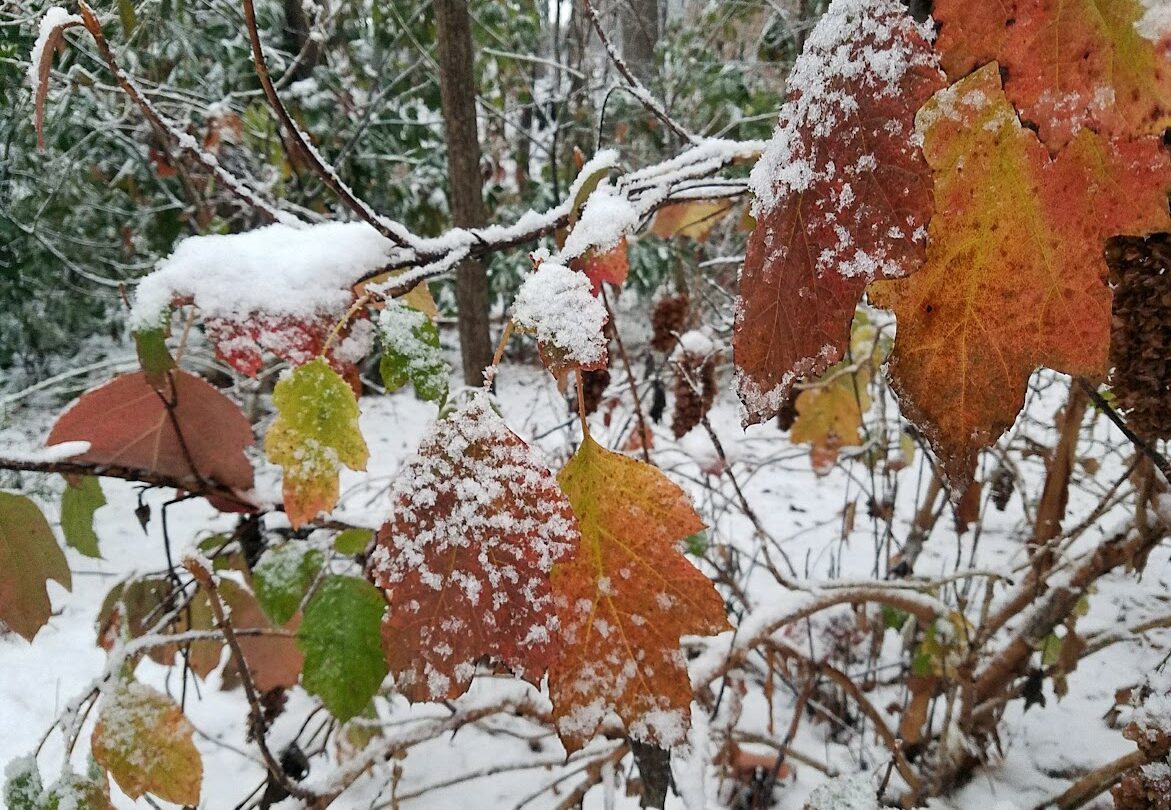
An early snowfall on Dec 8, 2017, frosted this oakleaf hydrangea, Hydrangea quercifolia, while it was still in fall color.
When the temperatures drop, we put on extra layers of clothing and turn up the heat in our homes and cars. Humans, and other mammals, generate heat within our bodies, so for us to keep warm we need to maintain that heat by not letting it escape or by heating the air around us.
Plants are another matter. Plants are generally about the same temperature as the surrounding air, so to deal with cold they must employ alternative methods to warm-blooded animals. As the days shorten and temperatures drop in autumn, plants begin a series of physiological processes to prepare for the cold.
Plant tissues, especially leaves and smaller stems, are full of water, which will freeze in cold temperatures and cause cell damage. Many plants avoid this by dropping their leaves; it is not worth the energy expenditure to constantly repair cold damaged leaf tissue when the short days and low winter sun do not provide much fuel for photosynthesis.
Curling leaves, as seen on these snapdragons, are a response to cold temperatures when plants expel water from their cells.
A second strategy, employed by evergreen and cold-hardy plants, is to physically alter the cellular structure within leaf tissue to deal with cold—a process called cold hardening. Plants have water both within and surrounding the cells in their leaves and stems. If the water in plant cells freezes, it will rupture cell membranes and cause damage to the plant. To combat this, cold hardy plants expel water from their cells and shrink the cell membrane to avoid ruptures. When temperatures increase again, the cells take water back in and expand to their regular size.
How do these traits of cold-weather plant physiology impact care regimens for our cultivated plants? The primary, and counter-intuitive, way that we can aid cold-hardy cultivated plants in winter is to make sure we water them well before bouts of freezing weather.
Watering before a freeze will help a plant rehydrate and recover afterwards. Pictured here are cold-hardy snapdragons, Antirrhinum majus Snaptastic ᵀᴹ ‘Magenta.’
Moist soil retains more heat and can help keep the air around a plant stay a bit warmer as the heat from the day is released over a cold night. Plants will also desiccate in cold weather as water in the soil becomes frozen and cold, dry winds pull moisture from foliage.
At a cellular level, it is also beneficial to water before a freeze to aid in the re-uptake of water by a plant’s cells; after they have expelled water to avoid freeze damage, they will need moist soil to rehydrate once temperatures warm up.
Though dousing ourselves in water to help deal with cold weather would lead to unfortunate outcomes, our plants will thank us for it.


